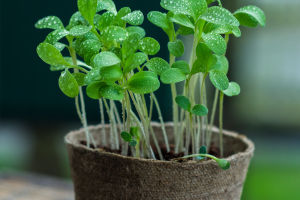The correct way to water plants is crucial for their healthy growth.
While the needs of each plant may differ slightly, some general principles can help ensure they receive the appropriate amount of moisture.
First, grasping the particular needs of the plants is essential. Various plant types have different water needs.
For instance, certain indoor plants like succulents require less water, while others, such as ferns, thrive in high humidity and need more frequent watering. Therefore, knowing your plants is the most important first step before deciding how to water them.
Choosing the right time to water is also important. Morning is an ideal time, as temperatures are lower, and water is less likely to evaporate, allowing plants to absorb moisture more effectively.
If you water in the hot afternoon, the moisture may evaporate quickly, preventing the plant from fully absorbing it. Additionally, avoid watering at night, as this can lead to the roots being wet for extended periods, increasing the risk of root rot and other issues.
The amount of water also needs careful control. Generally, you should wait until the top layer of soil is dry before watering again. You can check by gently inserting your finger into the soil; if it feels dry, it’s time to water.
When watering, make sure to soak the soil thoroughly, ensuring that the moisture penetrates down to the roots rather than just wetting the surface.
Using a container with drainage holes can help distribute the water evenly and allow excess moisture to drain out from the bottom. This method prevents water from pooling at the soil surface, promoting root health.
Some plants prefer drier conditions, while others require a certain level of humidity. For plants that thrive in moist environments, adding some drainage stones or ceramic pellets at the bottom can help retain moisture while preventing the roots from becoming overly wet. This provides a good growing environment and can reduce the frequency of watering.
The frequency of watering should also be adjusted based on seasonal changes. During the growing season, it is usually necessary to increase the watering frequency, as plants need more moisture to support their growth.
As the weather cools down and the growth rate slows, the frequency of watering can be reduced. Moreover, humidity levels can affect a plant's water requirements. In a high-humidity environment, the evaporation rate is slower, thus reducing the amount of water required.
Using the right water source is also essential. Tap water may contain chlorine and other chemicals that could harm sensitive plants.
Whenever possible, use filtered water or rainwater to water your plants to minimize potential harm. If you must use tap water, it’s best to let it sit for a while to allow the chlorine to evaporate before using it.
The correct way to water plants is a vital factor in ensuring their healthy growth. Understanding the plants’ needs, choosing the right time to water, controlling the amount and frequency of water, and using suitable water sources are all keys to success.
By following these methods, you can ensure your plants thrive and display their best condition. Pay attention to how your plants respond, and adjust your watering strategy as needed to achieve optimal care.


